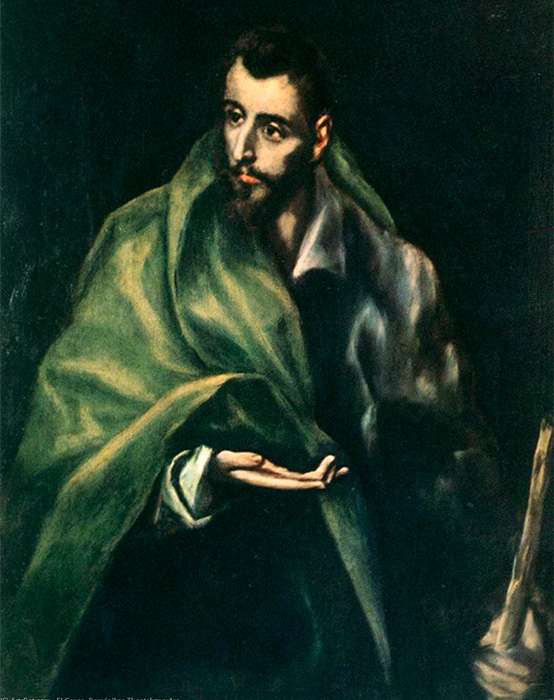Among the twelve apostles chosen by Jesus Christ, Saint James the Greater holds a prominent place. Brother of John the Evangelist and son of Zebedee, he was one of the first to be called by Jesus and also the first among the apostles to suffer martyrdom. His life, mission, martyrdom, and legacy of faith marked the history of the Church and of Western Christendom, particularly through the devotion to Santiago de Compostela in Spain.

Called by Jesus and Part of the Inner Circle
James was called while working as a fisherman alongside his brother and father. Upon hearing Christ’s invitation — “Follow me, and I will make you fishers of men” (Matthew 4:19) — he left everything and followed the Master.
Jesus nicknamed him and his brother John “Boanerges”, meaning “sons of thunder” (Mark 3:17), indicating they had a fiery temperament. James witnessed key moments in Jesus’ ministry, such as the raising of Jairus’s daughter, the Transfiguration on Mount Tabor, and the agony in the Garden of Gethsemane. He belonged to Christ’s innermost circle, alongside Peter and John.
The Mission after Christ’s Ascension
After Jesus’ ascension and the coming of the Holy Spirit at Pentecost, the apostles dispersed to evangelise. Scripture does not explicitly tell us where James went, but according to an ancient tradition of the Church in the Iberian Peninsula, he preached the Gospel in what is now Spain, especially in Galicia and Zaragoza.
According to this tradition, his mission was difficult and bore little fruit. At one point, disheartened, James received an extraordinary vision of the Virgin Mary herself, who was still alive in Jerusalem, appearing to him on a pillar of light by the River Ebro. This episode became known as the Apparition of Our Lady of the Pillar and is considered the first Marian miracle in Christian history, involving bilocation.
Sources That Record This Tradition
Though not found in the Gospels, these accounts come from venerable texts within the Latin tradition, used even in liturgical and devotional contexts. The principal sources are:
- Breviarium Apostolorum (6th century)
- De Ortu et Obitu Patrum by Saint Isidore of Seville (7th century)
- Translatio Sancti Iacobi, found in the Codex Calixtinus (12th century)
- Legenda Aurea by Jacobus de Voragine (13th century)
These texts belong to the Western tradition and are not linked to Gnostic or apocryphal writings. They form part of the Church’s devotional heritage, especially in Spain.
The Martyrdom of Saint James
Saint James was the first of the twelve apostles to suffer martyrdom. According to the Acts of the Apostles, he was killed by order of King Herod Agrippa I:
“At that time King Herod laid hands on some from the Church to harm them. He had James, the brother of John, put to death with the sword.” (Acts 12:1–2)
His martyrdom occurred around the year AD 44 in Jerusalem. Herod Agrippa governed Judea as a representative of Rome and had no jurisdiction outside of Palestine. Therefore, it is historically certain that James died in Jerusalem — the most secure fact we have regarding his life.
The Miraculous Translation: How Did His Body Reach Spain?
Here begins the most fascinating part of the Compostelan tradition. After James’s martyrdom, two of his disciples — Athanasius and Theodore — are said to have transported his body to Spain, crossing the Mediterranean Sea.
According to the traditional account, this journey occurred in a boat without sails, oars, or crew. The vessel was miraculously guided from the coast of Palestine to Padrón, in Galicia. There, the apostle’s body was buried in a deserted field, later named Campus Stellae — the Field of the Star.
The main sources that preserve this story include:
- The Codex Calixtinus, especially Book I, chapter XVII
- The Legenda Aurea, which popularised the tale among the faithful
- The Compostelan Chronicles (9th–13th centuries)
- The Roman Martyrology, which commemorates Saint James on 25 July
Although these accounts are not part of Scripture, they are part of a venerable and respected Latin Church tradition.
Rediscovery of the Tomb and the Birth of Santiago de Compostela
In the 9th century, around the year 813, a hermit named Pelayo reportedly saw strange lights in the sky over a field. Bishop Theodomir of Iria investigated and found an ancient tomb containing the remains believed to be those of Saint James.
The site became a pilgrimage shrine that would grow over the centuries: Santiago de Compostela. The Way of Saint James (Camino de Santiago) became one of Christianity’s greatest pilgrimage routes, alongside Rome and Jerusalem.
Devotion and Patronage
Saint James was declared the patron saint of Spain. During the Middle Ages, he became associated with Christian resistance against Muslim rule, giving rise to the image of Santiago Matamoros — the heavenly warrior aiding Christian armies during the Reconquista.
He is also known as the protector of pilgrims and is invoked by travellers and missionaries.
Conclusion
The story of Saint James the Greater blends biblical and historical facts — such as his death in Jerusalem — with the rich devotional tradition of the Western Church, especially in the Iberian Peninsula. Although his mission to Spain and the translation of his body are not found in Scripture, they are part of a solid, documented, liturgical, and widely recognised tradition.
Far from being apocryphal or Gnostic legend, devotion to Saint James the Greater stands on venerable sources and remains alive today in the heart of Christian faith. His feast is celebrated each year on 25 July, especially in Santiago de Compostela, where countless pilgrims still walk in the footsteps of this great apostle of the Lord.
